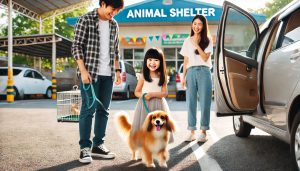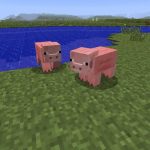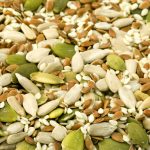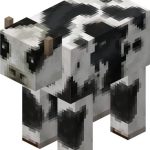13 Lesson 6B
1. Emparejar. Hoy vamos a hablar de mascotas. Before reading the article about “El Día del Perro”, we are going to learn some useful vocabulary. You will need your device to look up the vocabulary you don’t know for Activities 1 & 2.
Paso 1. Connect the following words with the most appropriate picture.
| 1. Adoptar |  |
| 2. Multa |  |
| 3. Cuidar |  |
| 4. Sin hogar |  |
Paso 2. The most popular and typical “mascotas” are cats and dogs, but there are various types of pets. In groups, write a list with at least 5 types of pets.
- gatos
2. Leer. Read this article from National Geographic (Adapted) about Dog Day in Spain published on July 21, 2023.
El Día del Perro en España
El 21 de julio se celebra el Día del Perro en España. Este día se creó (was created) en 2004 para enseñar a la gente sobre el problema de dejar (leave) a las mascotas sin hogar (home) especialmente en el verano, que es cuando más personas abandonan a sus perros.
¿Por qué el Día del Perro?
Muchos países tienen su propio día para celebrar a los perros, pero no todos lo celebran el mismo (same) día. En España se celebra el 21 de julio, pero en otros países puede ser en otras fechas. La idea es recordar la importancia de cuidar a los perros y no abandonarlos.
La tristeza (sadness) del verano
En verano, algunas personas se van de vacaciones y dejan a sus mascotas solas.. Esto está muy mal y es ilegal. Si alguien abandona a un perro, puede recibir una gran multa.
El problema de los perros sin hogar
Muchos perros en el mundo no tienen una casa. Por eso, el 21 de julio también se dedica a pensar en cómo podemos ayudar a los perros que viven en la calle.
Cómo cuidar a tu mascota
Tener un perro es una gran responsabilidad. Necesitas asegurarte de que (make sure) tu hogar es un buen lugar para él y que puedes cuidarlo bien. Los perros necesitan amor, ejercicio, y cuidados médicos.
Adoptar con cuidado
Si quieres adoptar un perro, es importante pasar tiempo con él antes de llevarlo a casa. Esto te ayudará (This will help you) a saber si pueden vivir bien juntos.
El compromiso de tener una mascota
Cuidar de una mascota mejora tu salud mental, pero también necesitas dedicar tiempo, amor y dinero. Algunos perros pueden necesitar un seguro de salud (health insurance) para cubrir gastos médicos.
Paso 1. In pairs, answer the following questions about the the reading.
- ¿En qué año se creó el Día del Perro en España?
- 2000
- 2004
- 2010
- 2015
- ¿Por qué el verano es un momento crítico para los perros según el texto?
- Porque muchos perros se pierden.
- Porque hay más festivales para perros.
- Porque más personas abandonan a sus mascotas.
- Porque los perros necesitan más ejercicio.
- ¿Cuál es una de las responsabilidades mencionadas de tener un perro?
- Asegurarse de que el hogar es adecuado.
- Comprarle ropa de moda.
- Enseñarle trucos (tricks) complejos.
- Llevarlo a trabajar.
Paso 2. Preguntas de discusión.
- ¿Existe El Día del Perro en los Estados Unidos?
- ¿Hay también en tu ciudad el problema de los perros sin hogar?
- En tu opinión, ¿cuidar una mascota ayuda a la salud mental?
3. Entrevistar. Imagine you are a pet owner and you are being interviewed for a community newspaper to celebrate “El Día de las Mascotas.” If you do not have a pet, think of any pet you know or would like to have. Role play the interview with your classmate.
- ¿Cómo se llama tu mascota?
- ¿Qué tipo de animal es?
- ¿Es grande o pequeño?
- ¿Cuántos años tiene?
- ¿Qué come la mascota?
- ¿Qué actividades haces con tu mascota?
- ¿Cuál es la actividad favorita de tu mascota?
4. Completar. In reality, dogs cannot do all these things by themselves. They need a responsible owner to help them with their care.
Paso 1. Using the verbs from the bank, complete the sentences about a responsible pet owner in a logical way. It’s possible that more than one answer makes sense. Remember that tener + que is always followed by an infinitive verb.
| alimentar | pasear | bañar | cepillar |
| acariciar | entrenar | vacunar | lavar |
- Todos los días la dueña responsable tiene que pasear a su perro.
- Cada año la dueña responsable tiene que _______________________ a su perro.
- Todas las mañanas la dueña responsable tiene que _______________________ a su perro.
- Regularmente la dueña responsable tiene que _______________________ a su perro.
- De vez en cuando la dueña responsable tiene que _______________________ a su perro.
- Ocasionalmente la dueña responsable tiene que _______________________ a su perro.
- Cada día la dueña responsable tiene que _______________________ a su perro.
- A veces la dueña responsable tiene que _______________________ a su perro.
Paso 2. Did you notice that verbs you wrote in the blanks above are not in the reflexive form (they do not have the pronoun “se” attached to the end)? Talk with a partner and share your ideas about why these sentences do not require a reflexive verb.
5. Escribir. Think about a family pet. If you have never owned a pet, imagine one that you would like to have.
Paso 1. Write out your answers to the following questions about caring for your pet. Be sure to conjugate the verb appropriately, and remember that these verbs are not reflexive (you do not need to use “se”).
- ¿Con qué frecuencia bañas a tu mascota?
- ¿Cepillas a tu mascota?
- ¿Cuándo y dónde paseas a tu mascota?
- ¿Qué actividades haces con tu mascota?
- ¿Acaricias mucho a tu mascota?
- ¿Qué le das de comer a tu mascota? Le doy…
Paso 2. Using the answers from the questions above, write 4-6 sentences about how you care for your pet. Start your paragraph with your pet’s name and what kind of animal it is.
Modelo:
Mi mascota se llama Maisy y es una perrita. Baño a Maisy cada dos semanas, pero a ella no le gusta mucho. Cepillo a Maisy frecuentemente…
Paso 3. Share your paragraph with a partner, and show them a picture of your real or imaginary pet.
6. Minecraft. In pair answer the following questions about Minecraft.
- ¿Te gusta jugar a Minecraft? ¿Por qué o por qué no?
- ¿Te gustan otros videojuegos? ¿Cuáles y por qué?
- ¿Crees que los videojuegos pueden ayudar a aprender un idioma? ¿Por qué?
7. Minecraft. ¿Qué comen los animales en Minecraft? Connect the animals with the food they most likely eat.
Modelo: a) En Minecraft, los conejos comen …
| Comida | Animales |

1) papas |

a) conejos |

2) zanahorias |

b) cerdos |

3) semillas |

c) vacas |

4) pescado |

d) gallinas |

5) trigo |

e) gatos |
8. Mirar. Triscando is a Minecraft avatar who has built a farm and is taking care of a few of his animals. Watch the following short video clips and select the phrase from the word bank that best completes the sentences. Be sure to conjugate the non-reflexive verbs in the present tense.
Modelo:
En este vídeo, Triscando construye una cerca para las ovejas.
|
Dar una zanahoria |
Construir una cerca |
Guiar |
Cepillar |
|
Esquilar (to shear) |
Limpiar |
Bañar |
Alimentar |
- Triscando ____________________________ a los burros hasta un corral.
-
Triscando le ____________________________ al conejo.
- Triscando ____________________________ al perro en el estanque (pond).
-
Triscando ____________________________ a la oveja para recoger la lana.
-
Triscando ____________________________ el corral de las vacas.
- Triscando ____________________________ a los cerdos.
9. Emparejar. Look at each picture of the Minecraft avatar doing different parts of their daily routine on the farm.
Paso 1. Select the letter of the conjugated verb from the list that best matches each picture.
| A. Se pone las botas de cowboy | 1)  |
| B. Se cepilla el pelo | 2)  |
| C. Se ducha | 3)  |
| D. Se maquilla | 4)  |
| E. Se acuesta | 5)  |
Paso 2. Compare your answers with a partner’s and answer the following discussion questions.
- En esta actividad (#8), los verbos requieren el pronombre “se.” ¿Por qué?
- En la actividad #9, los verbos no requieren el pronombre “se.” ¿Por qué no?
10. Conjugar. Read the following paragraph about Granjera Triscando’s typical day on her Minecraft farm. Select the correct form of the verb (reflexivo o no reflexivo) and then conjugate it in the present tense. Remember that the reflexive verbs require the pronoun “se!”
Un día en la vida de Triscando
Todos los días en la granja de Minecraft, Triscando 1. ____________________________ (despertar / despertarse) temprano y 2. ____________________________ (preparar / prepararse) para el día. Primero, 3. ____________________________ (alimentar / alimentarse) a sus conejos con zanahorias frescas y a sus pollos con semillas. Luego, 4. ____________________________ (construir / construirse) cercas y corrales para mantener a sus animales seguros, incluyendo a sus burros y sus cerdos. Durante el día, riega (water) sus cultivos y 5. ____________________________ (cuidar / cuidarse) de las plantas. Además, 6. ____________________________ (bañar / bañarse) en el río cercano después de mucho trabajo y 7. ____________________________ (vestir / vestirse) con ropa limpia. Por la noche, 8. ____________________________ (relajar / relajarse) con su gato y su perro y 9. ____________________________ (acostar / acostarse) temprano.
11. Imaginar. You are impersonating a farm animal who is the spokesperson for the other farm animals in your group.
Paso 1. Write at least two actions (reflexive verbs) that you and your animal friends do to yourselves on the farm and two additional actions (non-reflexive verbs) that you do as part of your daily experience at the Minecraft farm. Be sure to represent yourself and your animal group by using the nosotros form of the verbs.
Modelo: Somos los cerdos. Nos bañamos en el barro (mud) todos los días. También ayudamos con el trabajo en el jardín.
Paso 2. Present your routine to your partner. Your partner must ask you two follow-up questions. Take turns and answer your partner’s questions.
Modelo:
| Estudiante A | Estudiante B (el cerdo) |
| ¿Cuándo se bañan en el barro? | Nos bañamos en el barro por la mañana y por la noche. |

